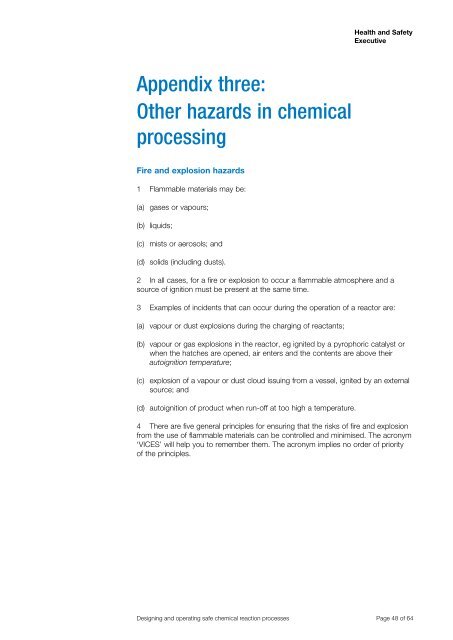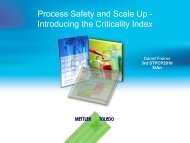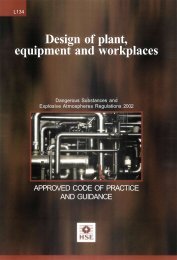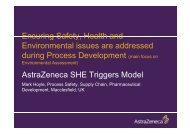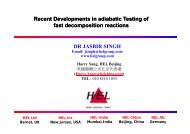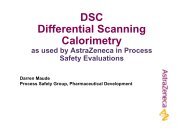Designing and operating safe chemical reaction processes HSG143
Designing and operating safe chemical reaction processes HSG143
Designing and operating safe chemical reaction processes HSG143
Create successful ePaper yourself
Turn your PDF publications into a flip-book with our unique Google optimized e-Paper software.
Health <strong>and</strong> SafetyExecutiveAppendix three:Other hazards in <strong>chemical</strong>processingFire <strong>and</strong> explosion hazards1 Flammable materials may be:(a) gases or vapours;(b) liquids;(c) mists or aerosols; <strong>and</strong>(d) solids (including dusts).2 In all cases, for a fire or explosion to occur a flammable atmosphere <strong>and</strong> asource of ignition must be present at the same time.3 Examples of incidents that can occur during the operation of a reactor are:(a) vapour or dust explosions during the charging of reactants;(b) vapour or gas explosions in the reactor, eg ignited by a pyrophoric catalyst orwhen the hatches are opened, air enters <strong>and</strong> the contents are above theirautoignition temperature;(c) explosion of a vapour or dust cloud issuing from a vessel, ignited by an externalsource; <strong>and</strong>(d) autoignition of product when run-off at too high a temperature.4 There are five general principles for ensuring that the risks of fire <strong>and</strong> explosionfrom the use of flammable materials can be controlled <strong>and</strong> minimised. The acronym‘VICES’ will help you to remember them. The acronym implies no order of priorityof the principles.<strong>Designing</strong> <strong>and</strong> <strong>operating</strong> <strong>safe</strong> <strong>chemical</strong> <strong>reaction</strong> <strong>processes</strong> Page 48 of 64


